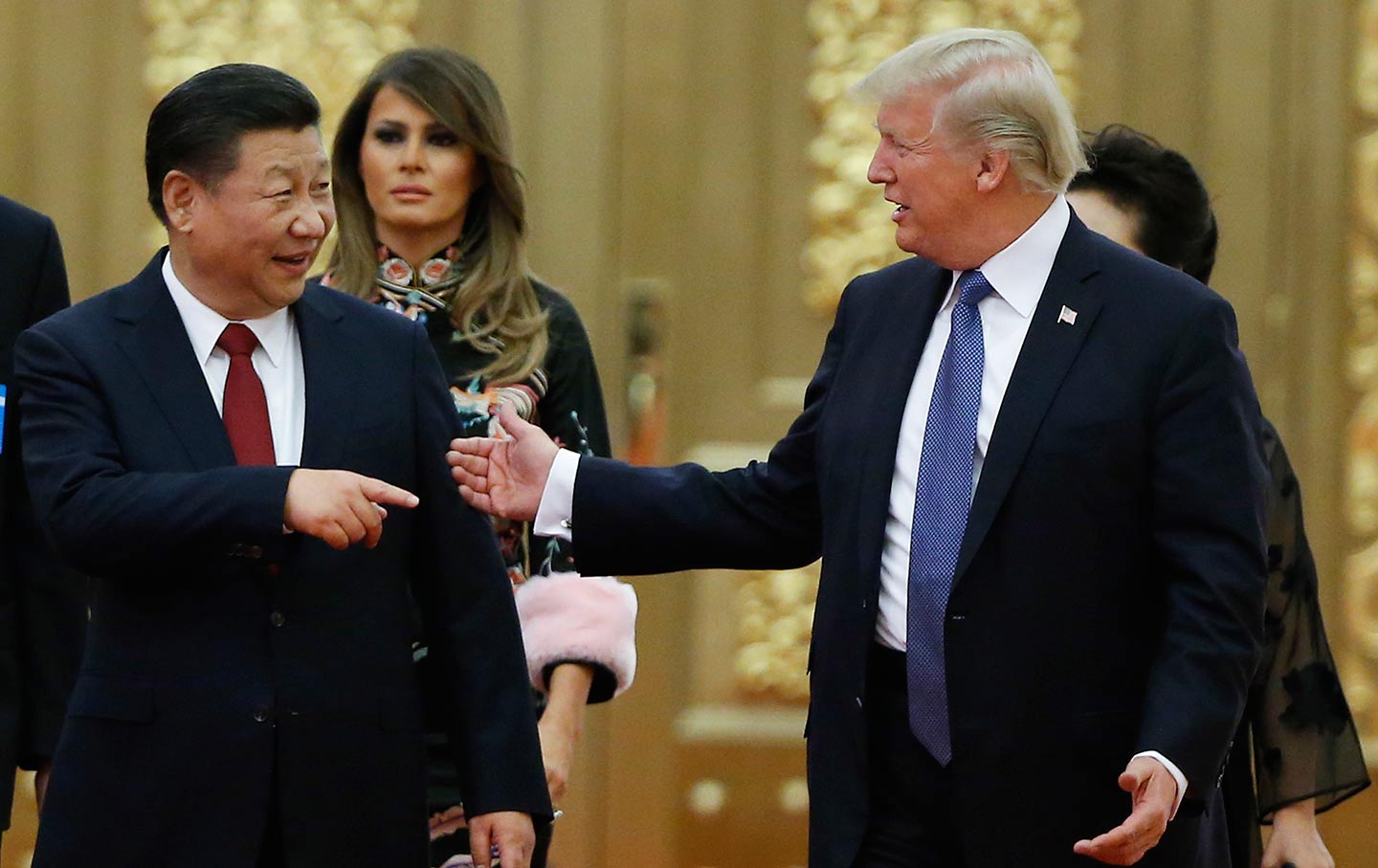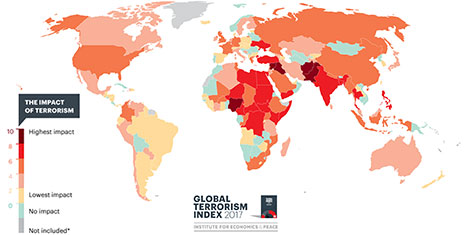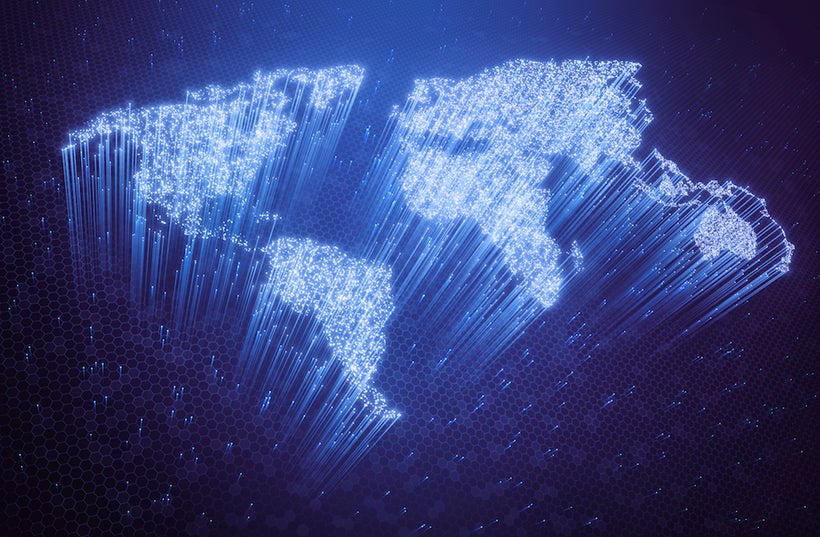I had the privilege of serving in OP - RAKSHAK in Punjab in 1990-1991, OP – RIHNO in Assam during 1991 – 1992 and three tenures in J&K. After my tenure as Chief Signals Officer, Chinar Corps at Srinagar I wrote a paper on Leveraging Technology In Counter Insurgency Operations which was published at in The PINNACLE, The ARTRAC Journal in its Jun 2008 issue. The same in available at : https://drive.google.com/file/d/0B7lCgXHBh1PaTlQ3VVZYbFRWbXM/edit?usp=sharing
After 10 years, on 26/11 I thought of revisiting the topic.
Here is my take on Use of Technology in Counter Terrorism Operations.
- PKM
Use of Technology in Counter Terrorism Operations
- Maj Gen P K Mallick, VSM (Retd)
Introduction
The technologies that connect the modern world are among humanity’s greatest accomplishments. Never before have so many people had easy access to affordable tools to communicate, learn, organise and transact. Freed from the old constraints of geography and physical factors of production, a new generation of technologists has ushered in an era of exponential change. The opportunities are truly transformational: delivering lifelong access to education and good work, building world-class internet infrastructure, automating government administration and doubling down on front-line staff, bringing cutting edge tools and business models into the public sector, developing a new social contract with big tech – and much more besides.
Social media has helped like minded people around the world to connect, but in some cases it has also aided the causes of Islamist or far right extremists by introducing them to similarly inclined individuals and organisations. The battle against online extremism and disinformation is an apt example of how innovations that have had an overwhelmingly positive impact on global interactions and connectivity have been exploited by groups with nefarious objectives. Whether it is ISIS videos on YouTube, the encrypted communications of the group’s supporters, or Russian-backed ads on Facebook and Twitter that seek to influence elections, none of these represents what tech developers set out to revolutionise.
Terrorists excel at exploiting opportunities, forging something out of what already exists. But terrorists did not create Twitter, YouTube, or Facebook – although they have used these platforms extensively. So the balance of power lies not with abusers of platforms but with their developers and governments.
it is clear that both tech companies and governments are aware of the scale of the challenge and the need to act. The introduction of artificial intelligence, machine learning and natural language processing technology to identify and remove terrorist content online is a positive move to make the Internet safer. But an overreliance on censorship detracts from the other ways technology can support the fight against extremism.
As advancements in digital communications and artificial intelligence continue, those developing these technologies must learn from the experiences of social media and messaging apps, whose innovations have been hijacked by people and groups with malicious aims. Technology companies have demonstrated their commitment to tackling such abuses, but they must move beyond responding to threats and frontload considerations about security, safety, and social impact and responsibility from the design phase, rather than dealing with them as an afterthought.
Responsible leadership and decisionmaking are required from governments and technology firms to deliver the products and services needed to reap the benefits of innovation and make technology work for everyone.
Use of Technology by Law Enforcing Agencies
- Technology can help in:
- Understand the causes of radicalisation
- Protect the national infrastructure
- Reduce the vulnerability of crowded places
- Protect against cyber terrorism
- Improve analytical tools
- Identify, detect and counter novel and improvised explosives
- Understand and counter chemical, biological, radiological, nuclear and explosive threats (CBRNE)
Communications. Counter terrorism efforts have forced terrorist groups to change how they communicate. The U.S. government turned the full attention of its military and intelligence assets against al Qaeda following the 9/11 attacks and the invasion of Afghanistan. Soon after, al - Qaeda leaders found that it was dangerous to use radios, cell phones or satellite phones to communicate. Many al Qaeda leaders hiding in Pakistan were tracked down and captured because of sloppy communication methods. Identifying and tracking al Qaeda communications networks was so successful that it forced Osama bin laden to shun electronic communications devices altogether, relying instead on human couriers as a link to the outside world.
In the places where it was more difficult to capture or arrest terrorist leaders, the United States began to use unmanned aerial vehicles and missiles to not only track but also attack targets. The rise of armed drone strikes again caused terrorists to alter their operations. High value targets had to change how they communicated and traveled. Even rank and file members had to be trained differently: Iraqi forces recently found an underground training facility in their operation to re-capture Mosul, showing just what lengths the Islamic State went to when it came to protecting its fighters from detection and attack.
When it comes to planning an attack, the internet is again an invaluable tool. Information available online can be very useful in the target selection phase of the terrorist attack cycle and can greatly aid terrorist planners as they begin to conduct surveillance for the planning phase of the cycle. And while research on the internet simply cannot replace physical pre-operational surveillance, it can provide teams with a great deal of information that can guide and help shorten the process. Smartphones with video and still camera capabilities are incredibly useful in surveillance operations, as are remote cameras that can be used to monitor the residences or offices of potential targets, all without having to place operatives on the street. Many cameras can be monitored in real time over the internet.
Key Information Technologies(IT) for Counterterrorism
The world has changed dramatically since the Cold War era. The ballistic missiles and satellite surveillance systems that were considered so effective at ending the Cold War are not sufficient to counter this new threat. There are many technology challenges, but perhaps few more important than how to make sense of and connect the relatively few and sparse dots embedded within massive amounts of information flowing into the government’s intelligence and counterterrorism apparatus. IT plays a crucial role in overcoming this challenge. The government’s intelligence and counterterrorism agencies are responsible for absorbing this massive amount of information, processing and analyzing it, converting it to actionable intelligence, and disseminating it, as appropriate, in a timely manner.
Table shows some information technologies considered important for counterterrorism.
Counter-terrorism technologies and diverse partnerships are essential when dealing with terrorist threats in cities. RAND Europe's five counter-terrorism policy recommendations based on the analysis:
· Deploy appropriate counter-terrorism technologies that enhance decision making, but pay attention to the evolving technology landscape.
· Establish partnerships with all levels of national government, law enforcement agencies, private sector security companies and local authorities, while also collaborating with international partners and allies.
· Where possible, engage with the public, the media and local communities when deploying new counter-terrorism technologies, such as surveillance systems.
· Carefully consider the extent to which data collection and data sharing during a counter-terrorism operation are proportionate, necessary and justified.
· Identify and address any potential privacy issues as early as possible before introducing new counter-terrorism technologies.
Use of Internet
The Internet could be exploited by terrorist organizations for several purposes including:
- Propaganda
- Psychological warfare
- Recruitment and mobilization
- Fundraising
- Data Mining, information gathering
- Secure communications
- Cyber attacks
- Software distribution (e.g., mobile app)
- Buying false documents
- Training
The Internet propaganda is probably the most common use of technology by terrorist organizations. Groups like the ISIS demonstrated a great mastery of the technology and a deep knowledge of the techniques of communication. Each video is carefully prepared, and its programming is meticulous and aims to reach the largest number of individuals. Terrorists use the new social platforms like Facebook, Twitter and media services such as YouTube. Their language is direct, young, and it can reach a specific audience by using images with a high emotional impact. The online propaganda is multi-lingual. It reaches not only Arab people and is easily accessible to young people. The amplification effect is obtained through easy dissemination of content, sympathizers and media outlets allow easy sharing of the terrorist messages through emails, messaging and mobile apps.
Terrorist Propaganda. The chain of communication leading massacres and executions directly into our homes is extremely short, a few tools (i.e. A smartphone, a camera and a laptop) and the free Internet network are the pillars of the new strategy of terror.
· Figure – Chain of Terrorist propaganda (Gawker.com)
One of the phenomena worries the intelligence agencies most of all is the narrowcasting; that consists in the dissemination of information to a narrow audience. The narrowcasting targets specific segments of the public, contextualizing the practice to the terrorism, the propaganda content could be crafted to reach teenagers. Security experts have uncovered a number of websites offering pro-jihad content designed using a ‘comic-style’ and high impact Videos and Animations. The scenarios we are exploring demonstrate the great interest of modern terrorism in technology, the Internet is becoming a point of attraction for members of terrorist organizations and wannabe terrorists. Another worrying aspect related to the strict link between technology and terrorism is the possibility of acquiring counterfeit documents that could be used by militants to move across the Europe. On the internet, and in particular in the cybercriminal underground, there are many black markets where it is possible to acquire any kind of illegal product and services, including fake documents.
Pseudo-anonymity offered by darknet makes the dark web an ideal environment for various activities such as:
· Propaganda
· Purchasing weapons
· Purchasing stolen card data
· Counterfeit documents
· Recruiting
· Download Mobile Apps used for secure communications
· Purchase of malicious code
· Fund-raising
· Doxing (process of gathering information about a person from internet)












